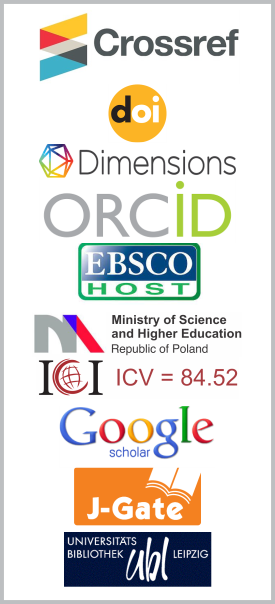Laceability in Hanoi Graphs
DOI:
https://doi.org/10.26713/jims.v11i3-4.789Keywords:
Hamiltonian Laceability, Hamiltonian connectedAbstract
The topological structure of an interconnection network can be modelled by a connected, simple and undirected graph \(G=(V,E)\) where \(V\) represents the set of processors and \(E\) represents the set of communication links. Interconnection networks are used to interconnect the processors of data centres and cluster computers. The study of Hamiltonicity and the related areas such as Hamiltonian laceability and Hamiltonian connectedness has lot of significance in computer networks. A network(graph) is Hamiltonian connected if it contains a Hamiltonian path between two distinct nodes (vertices). In this paper we shall study the laceability properties associated with Hanoi graphs \(H_n\). To be more specific we shall explore Hamiltonian \(t^*\) connectedness of Hanoi graphs \(H_n\) for \(n\ge3\).Downloads
References
A. M. Hinz and D. Parisse, On the planarity of Hanoi graphs, Expo. Math. 20(3) (2002), 263 – 268.
M. Annapoorna and R. Murali, Hamiltonian Laceability in the line graph of the ((w,1,n,k)) graph, International Journal of Computer Application 5 (2015), 8 – 15.
C.-K. Li and I. Nelson, Perfect codes on the towers of Hanoi graph, Bulletin of the Australian Mathematical Society 57 (3) (1998), 367 – 376, DOI: 10.1017/s0004972700031774.
D. Arett and S. Doree, Colouring and counting on the tower of Hanoi graphs, Mathematical Association of America 83(3) (2010), 200 – 209, DOI: 10.4169/002557010x494841.
D. Berend, A. Sapir and S. Solomon, The Tower of Hanoi problem on path graphs, Discrete Applied Mathematics 160 (2012), 1465 – 1483, DOI: 10.1016/j.dam.2012.02.007.
D. Berend and A. Sapir, The diameter of Hanoi graphs, Information Processing Letters 98(2) (2006), 79 – 85, DOI: 10.1016/j.ipl.2005.12.004.
A. Girisha and R. Murali, Hamiltonian laceability in cyclic product and brick product of cycles, International Journal of Graph Theory 1(1) (2013), 32 – 40.
A. M. Hinz, The tower of Hanoi, Enseign. Math. 35(2) (1989), 289 – 321.
A. M. Hinz, Pascal's triangle and the tower of Hanoi, Amer. Math. Monthly 99 (1992), 538 – 544, DOI: 10.1080/00029890.1992.11995888.
A. M. Hinz, The tower of Hanoi, in: K. P. Shum, E. J. Taft and Z. X. Wan (eds.), Algebras and Combinatorics, Springer, Singapore, 277 – 289 (1999).
L. N. Shenoy and R. Murali, Laceability on a class of regular graphs, International Journal of Computational Science and Mathematics 2(3) (2010), 397 – 406.
L. Xuemiao, Towers of Hanoi graphs, International Journal of Computer Mathematics 19(1) (1986), 23 – 38.
R. Kumar and U. Maheswari, Matrix representation of Hanoi graphs, International Journal of Science and Research 4(4) (2015), 173 – 174.
S. Aumann, K. A. M. Gotz, A. M. Hinz and C. Petr, The number of moves of the largest disc in shortest path on Hanoi graphs, The Electronic Journal of Combinatorics 21(4) (2014), 1 – 22.
S. Klavzar and U. Milutinovic, Graphs S(n,k) and a variant of the tower of Hanoi problem, Czechoslovak Math. J. 47(122) (1997), 95 – 104, URL: http://dml.cz/dmlcz/127341.
Downloads
Published
How to Cite
Issue
Section
License
Authors who publish with this journal agree to the following terms:- Authors retain copyright and grant the journal right of first publication with the work simultaneously licensed under a CCAL that allows others to share the work with an acknowledgement of the work's authorship and initial publication in this journal.
- Authors are able to enter into separate, additional contractual arrangements for the non-exclusive distribution of the journal's published version of the work (e.g., post it to an institutional repository or publish it in a book), with an acknowledgement of its initial publication in this journal.
- Authors are permitted and encouraged to post their work online (e.g., in institutional repositories or on their website) prior to and during the submission process, as it can lead to productive exchanges, as well as earlier and greater citation of published work.




